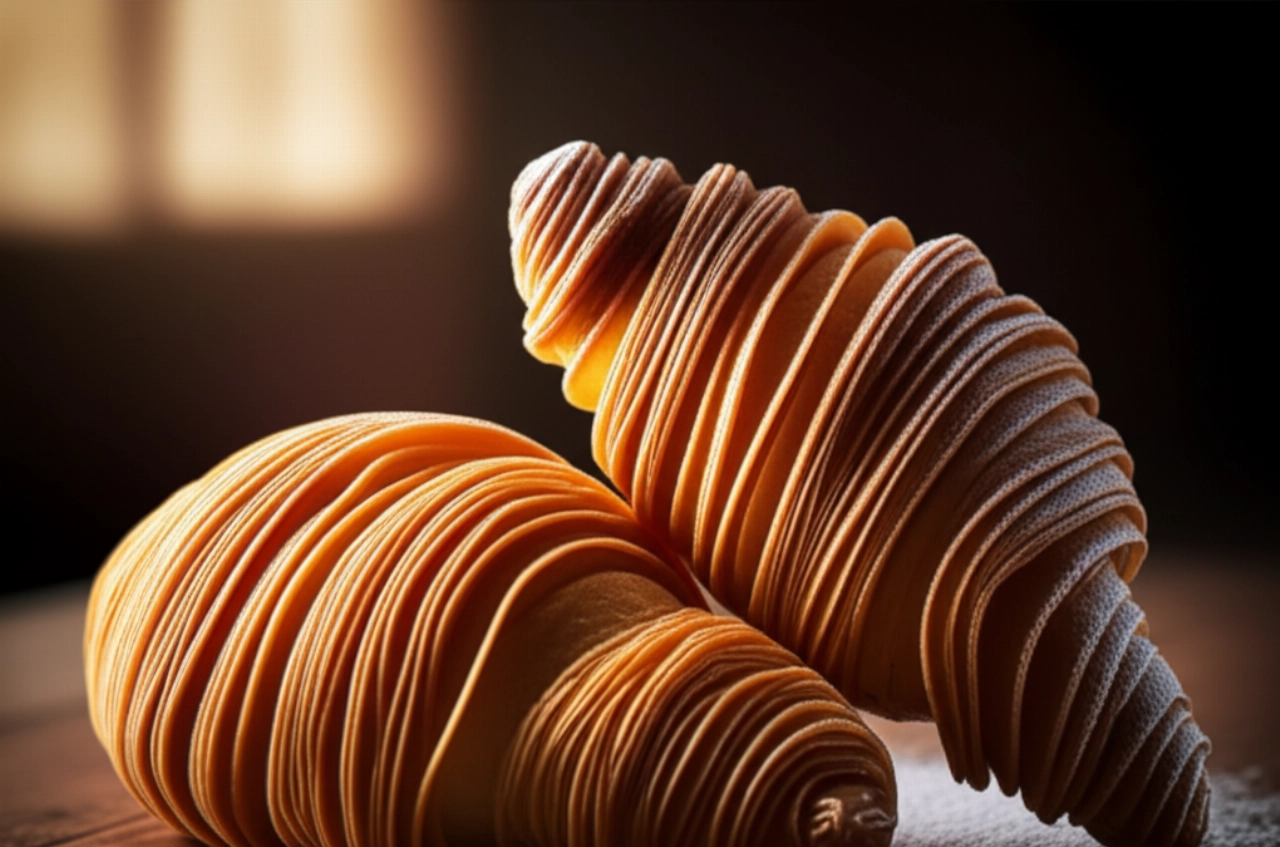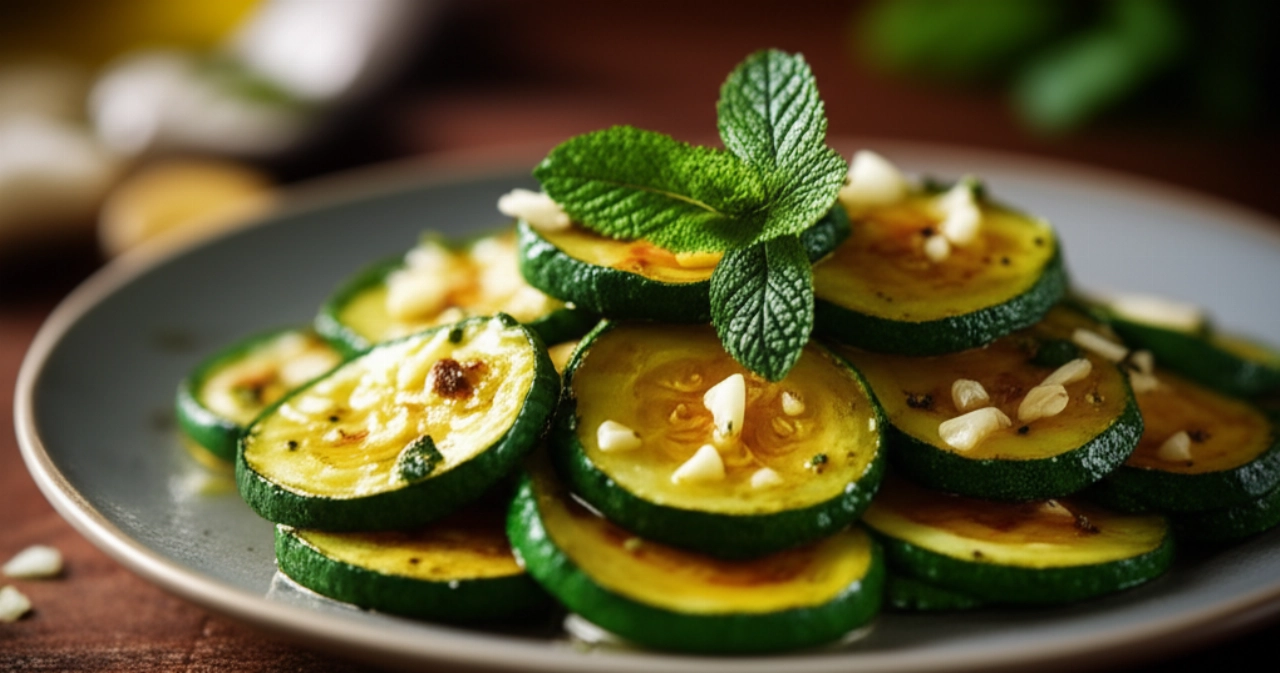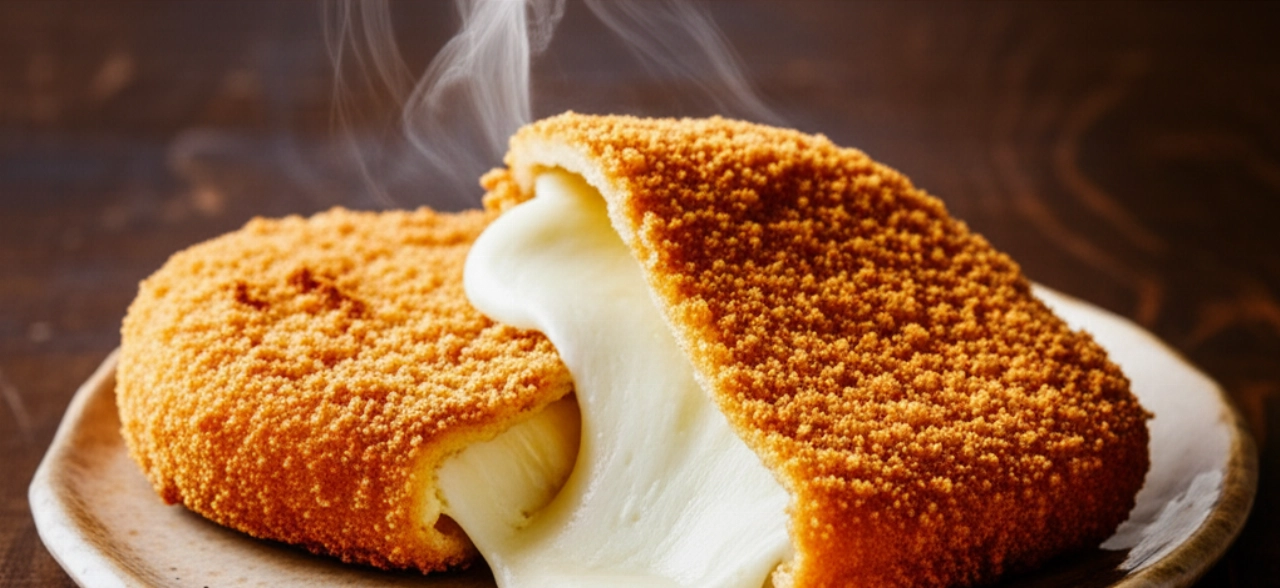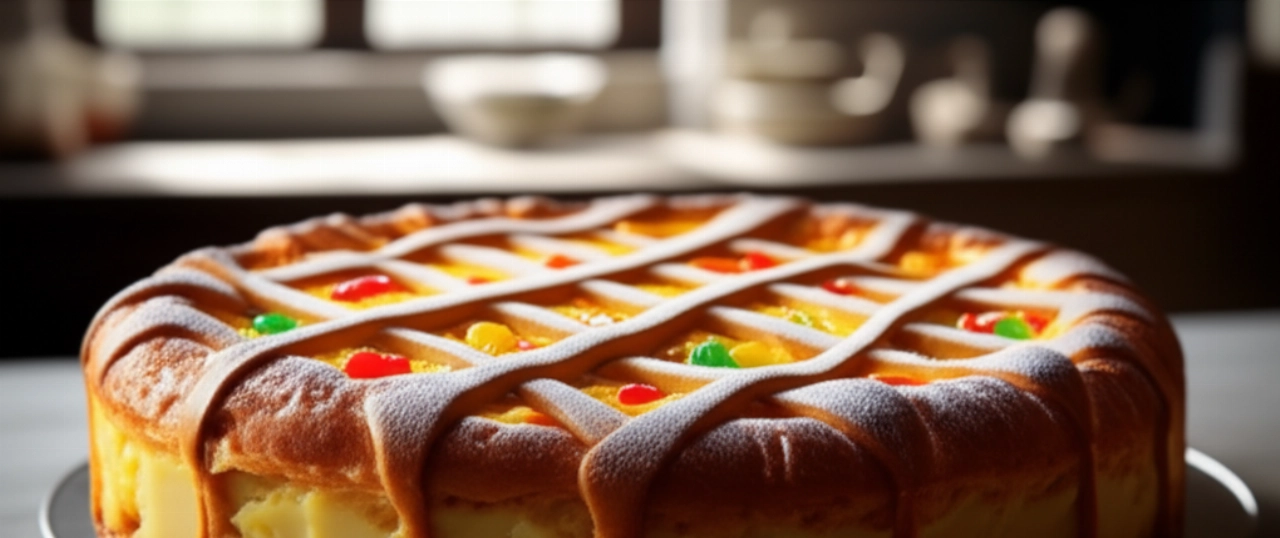How many times have you found yourself with leftover pasta from the day before and wondered: 'Now what do I do with it?' Maybe you thought about throwing it away, or sadly reheating it, losing all its flavor and that texture you love so much.
The truth is, transforming leftover pasta into something delicious and surprising isn't always easy. You risk ending up with a dry, bland dish, or one that falls apart at the least opportune moment. And the fear of wasting precious time and ingredients, or not making a good impression on your guests, stops you from trying new paths.
Make yourself comfortable, because today I'm opening the doors of my kitchen and revealing the secret to a Pasta Frittata that isn't just a way to repurpose, but a true masterpiece of Neapolitan cuisine. I'll guide you step by step, with all the tricks to get a frittata that's crispy on the outside, soft and flavorful on the inside, which will make everyone exclaim 'Wow!' Success is guaranteed, and you'll feel like a true guardian of Italian culinary tradition.
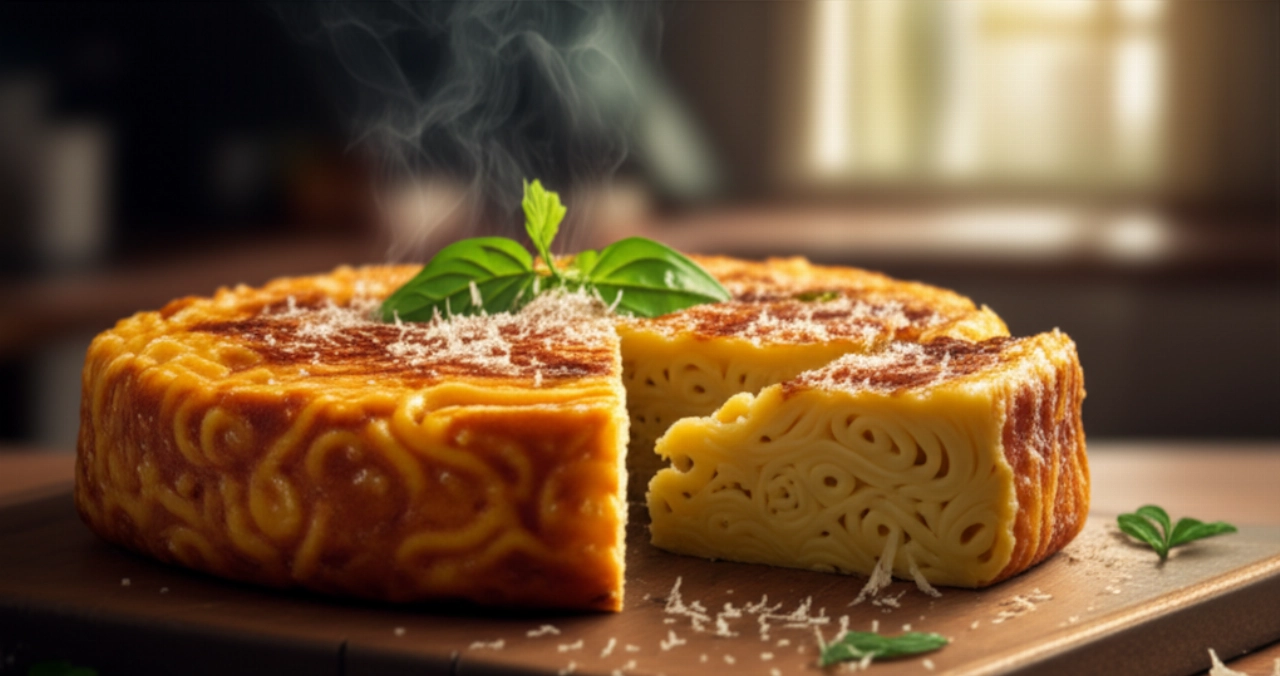
Ingredients for a Perfect Pasta Frittata: The Choice That Makes All the Difference
It's not just a list, but a thoughtful selection that makes the difference between a good frittata and an unforgettable one. Each ingredient has its purpose, and together they create a harmony of flavors and textures.
- Leftover pasta (approx. 300-400g): Short pasta (macaroni, penne, rigatoni) or broken spaghetti are ideal. If the pasta is too dry, you can lightly moisten it with a little water or broth. It's the base of our repurposing masterpiece!
- Fresh eggs (4-5 large): They are the magical binder that holds everything together. Choose very fresh ones, preferably free-range, for a more intense flavor and perfect consistency.
- Grated cheese (80g): A mix of Pecorino Romano and Parmigiano Reggiano is ideal. Pecorino adds a savory and decisive touch, Parmigiano an unmistakable sweetness and aromatic complexity.
- Diced cured meats (100g): Cooked ham, Neapolitan salami, or even pancetta. They add flavor, moisture, and a pleasant chewiness. Choose what you love most or what you already have in the fridge!
- Provola or Scamorza (100g): Diced. This stringy cheese is the secret to that internal creaminess that melts in your mouth, making every bite an explosion of flavor.
- Milk or broth (1 tablespoon): A small touch that will make your frittata incredibly soft and moist, preventing it from drying out during cooking.
- Salt and Black Pepper: Just enough to enhance all the flavors.
- Nutmeg (a pinch): A subtle but fundamental aroma that binds all the flavors and adds a touch of elegance.
- Extra Virgin Olive Oil: For perfect cooking and an irresistible golden crust.
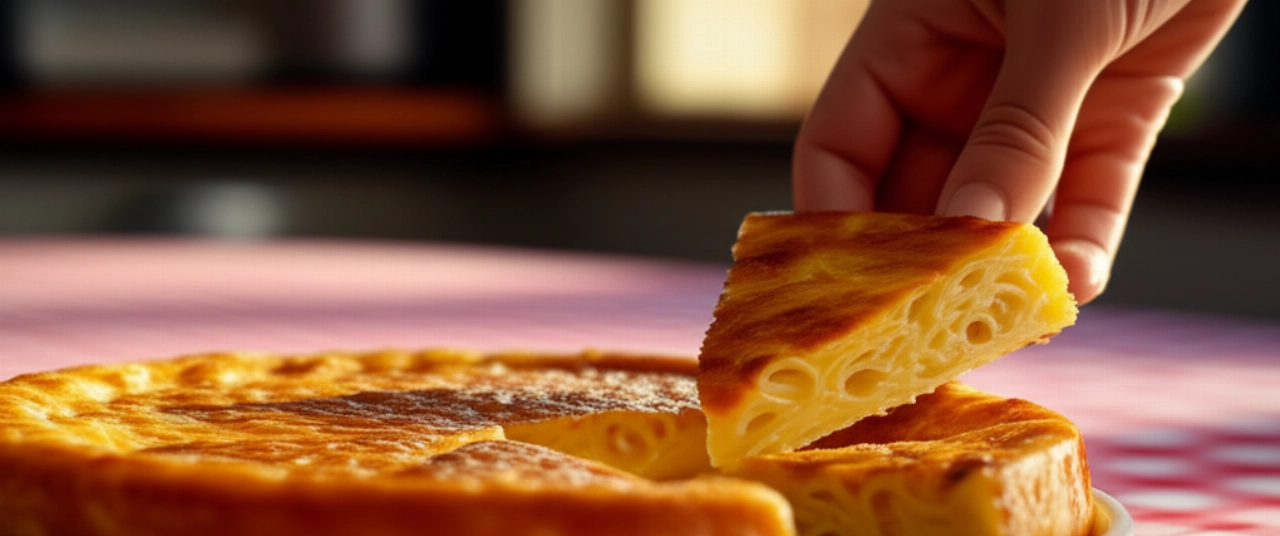
The 3 Common Pasta Frittata Mistakes (and How to Avoid Them)
As a true guardian of the kitchen, I want to protect you from the most common pitfalls. Knowing these mistakes will allow you to avoid them and ensure the success of your dish, without waste or frustration.
- Too Many Eggs or Too Few: This is the most frequent mistake. If you add too many eggs, the frittata becomes an egg frittata with pasta, losing its identity. If you add too few, the mixture won't bind well and the frittata will fall apart at the first cut. The right proportion is fundamental for a perfect consistency.
- Cooking Too Fast or Too Slow: A fire that's too high burns the outside of the frittata, leaving the inside raw and undercooked. A fire that's too low, on the other hand, makes it rubbery and dry, depriving it of its golden crust. The key is medium and constant cooking, allowing heat to penetrate uniformly.
- Not Using Quality Ingredients (or not balancing them): Pasta frittata is a dish that enhances the flavor of its ingredients. Don't skimp on the quality of cheeses and cured meats. Furthermore, an excess of cured meats or cheeses can make the frittata too heavy or too salty. The secret is balance.
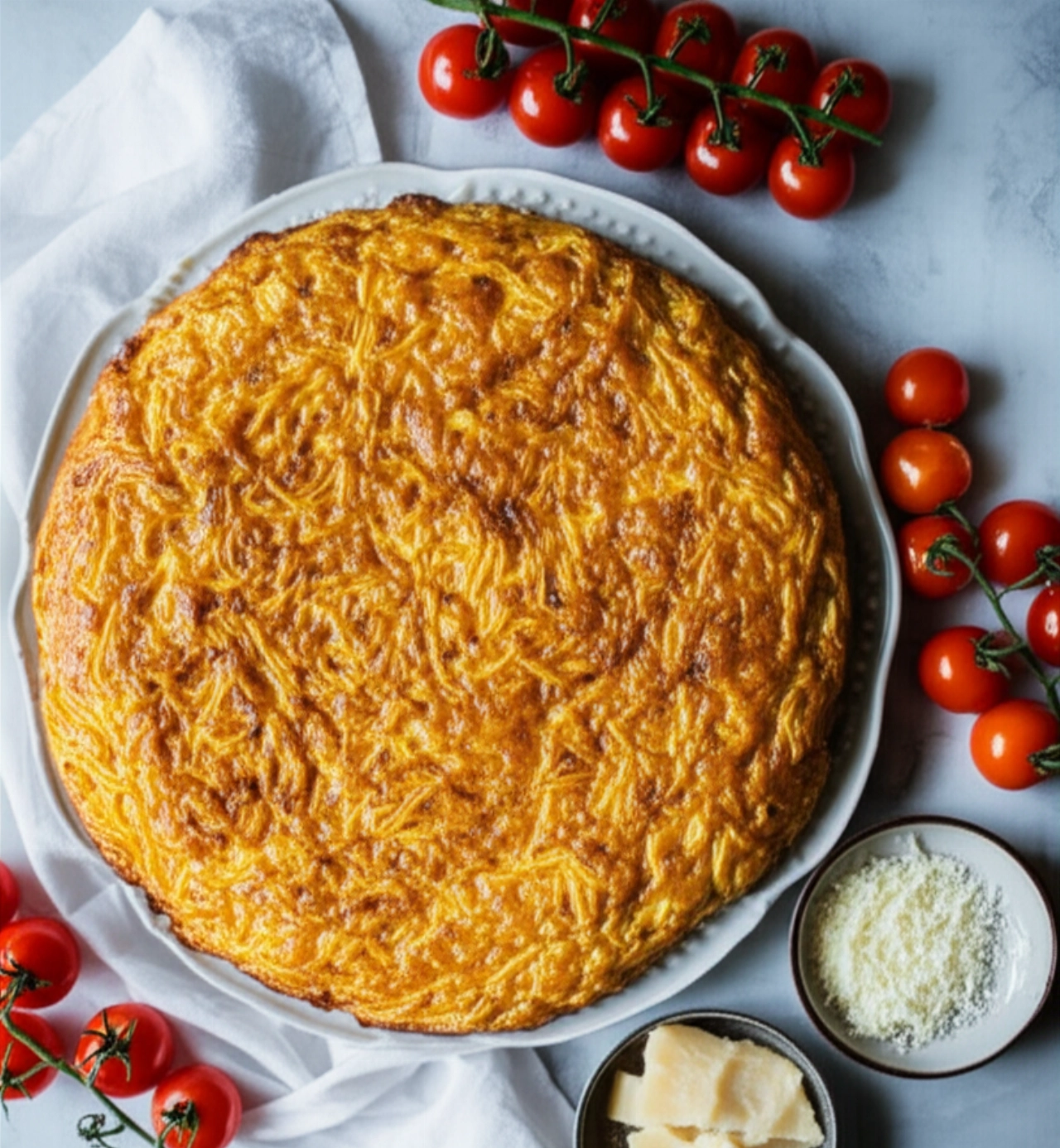
Grandma's Magic Touch: The Secret to an Infallible Pasta Frittata
There's a tip my grandma passed down to me, a little secret that always made her pasta frittata legendary. It's not a complicated trick, but it makes all the difference in the world.
Grandma, when preparing pasta frittata, always added a tablespoon of milk or broth to the egg mixture. This small gesture makes the frittata incredibly soft and moist, preventing it from drying out during cooking and giving it a fluffiness that will surprise you. And then, another secret, almost a whisper: a pinch of nutmeg. It doesn't cover the flavors, but enhances them, binds them, giving an enveloping aroma and a touch of mystery. Try it, and you'll feel the difference, that taste of home that only true secrets can provide!
Let's Prepare Pasta Frittata Together: The Step-by-Step Guide
Now that we have all the secrets, let's get cooking! I'll guide you step by step, with the calm and precision that only experience can provide. Every step is important for the final success.
- Prepare the Pasta: Make sure the leftover pasta is cold. If it's too dry or sticky, you can quickly rinse it under cold water and drain it well, or lightly moisten it with a tablespoon of water or broth to soften it.
- Prepare the Filling: Cut the cured meats (ham, salami) and provola or scamorza into small, regular cubes. This will ensure an even distribution of flavor and creaminess.
- The Magic Mixture: In a large bowl, whisk the eggs with a fork or whisk. Add salt, freshly ground black pepper, grated cheese (Parmigiano and Pecorino), the tablespoon of milk or broth, and the pinch of nutmeg. Mix well until you get a homogeneous and slightly frothy mixture.
- Combine Everything: Pour the leftover pasta into the bowl with the egg mixture. Add the diced cured meats and provola/scamorza. Mix gently but thoroughly, ensuring that each piece of pasta is well coated with the egg mixture and that the other ingredients are evenly distributed.
- Pan Cooking (the heart of the crust): Heat a generous drizzle of extra virgin olive oil in a suitable non-stick pan (about 24-26 cm in diameter, if possible one that can also go into the oven). When the oil is hot but not smoking, pour the mixture into the pan. Level the surface well with a spatula, pressing lightly to compact.
- The Golden Crust: Cook over medium-low heat for about 10-15 minutes. Don't rush! You'll see the edges of the frittata starting to detach and brown. The bottom should become crispy and a beautiful golden color.
- The "Flip" (the crucial moment!): This is the step that can inspire fear, but with a bit of decisiveness, it's very simple. Cover the pan with a plate larger than the frittata's diameter. With a quick and decisive movement, flip the pan onto the plate. Now the frittata is on the plate, with the cooked side facing up. Gently slide the frittata back into the pan to cook the other side.
- Cooking the Second Side: Cook the other side for another 5-7 minutes, or until it is also golden and crispy. If you prefer a taller frittata that is uniformly cooked inside, you can transfer it to a preheated oven at 180°C (350°F) for 10-15 minutes after cooking it on both sides in the pan.
- Serve and Enjoy: Once cooked, let the frittata cool slightly in the pan for a few minutes. This will help it compact further. Then, transfer it to a cutting board and cut into wedges or cubes. It's delicious both hot and at room temperature, perfect for lunch, an informal dinner, or a picnic!
Tips and Frequently Asked Questions about Pasta Frittata
I know you might still have some doubts, and that's perfectly fine! Here are the answers to the most common questions to clear up any uncertainty and make you feel even more confident in the kitchen.
- Can I use any type of leftover pasta? Yes, generally speaking. However, short pasta (like penne, rigatoni, fusilli) or broken spaghetti are the most suitable because they blend better with the egg and cheese mixture.
- Can I prepare the mixture in advance? Of course! You can prepare the complete mixture (pasta seasoned with eggs and other ingredients) and store it in the refrigerator, well covered, for a few hours (maximum 12-24 hours, considering the fresh ingredients). This allows you to save time.
- How can I make the frittata richer or lighter? For a richer version, you can add other cured meats (e.g., spicy salami), sautéed vegetables (peas, zucchini), or mushrooms. To make it lighter, reduce the amount of cured meats and cheeses, or opt for low-fat cheeses.
- Can pasta frittata be frozen? Absolutely yes! Once cooked and completely cooled, you can cut it into portions, wrap it well in plastic wrap and then in aluminum foil. It keeps in the freezer for about 1-2 months. To thaw it, leave it in the refrigerator and then reheat it in the oven or pan.
- Why did my frittata stick or break during flipping? This can happen! The most common causes are: too little oil in the pan, a non-stick pan that isn't sufficient or not hot enough at the beginning, or an egg mixture that isn't enough to bind the pasta well. Make sure to use a good pan and grease the bottom well.
There you have it! Now you don't just have a recipe, but all the secrets to transform leftover pasta into a dish that tastes like a celebration, tradition, and ingenious repurposing. A true comfort food that will make you feel like a kitchen wizard, capable of creating wonders with what you have available.
Don't be afraid to experiment with the ingredients you have in the fridge; cooking is also about creativity and zero waste. But start from this solid and infallible base, and you'll see that your Pasta Frittata will become a family classic, a highly requested dish that will fill you with pride and applause.
Have you tried our Pasta Frittata recipe? We're very curious to see your masterpiece! Leave a comment below, tell us how it went, or share a photo on Instagram by tagging @CercaRicette.it. If you loved this recipe, you can't miss our guide to preparing a perfect tomato sauce for your next pasta, or the recipe for our Grandma's Meatballs in Sauce, another timeless classic that will make you feel at home!

